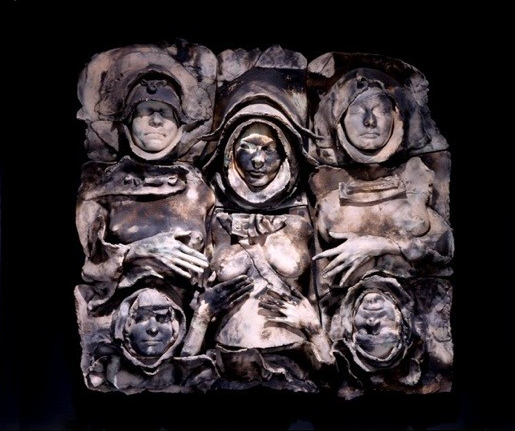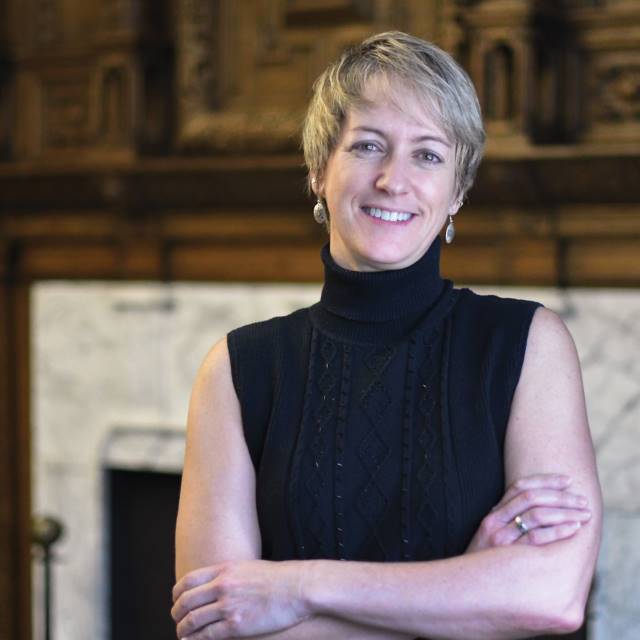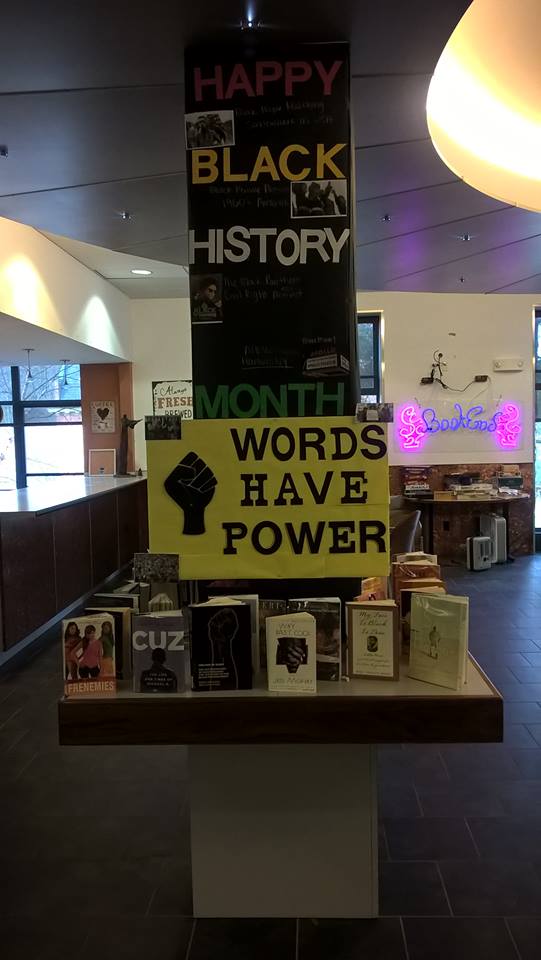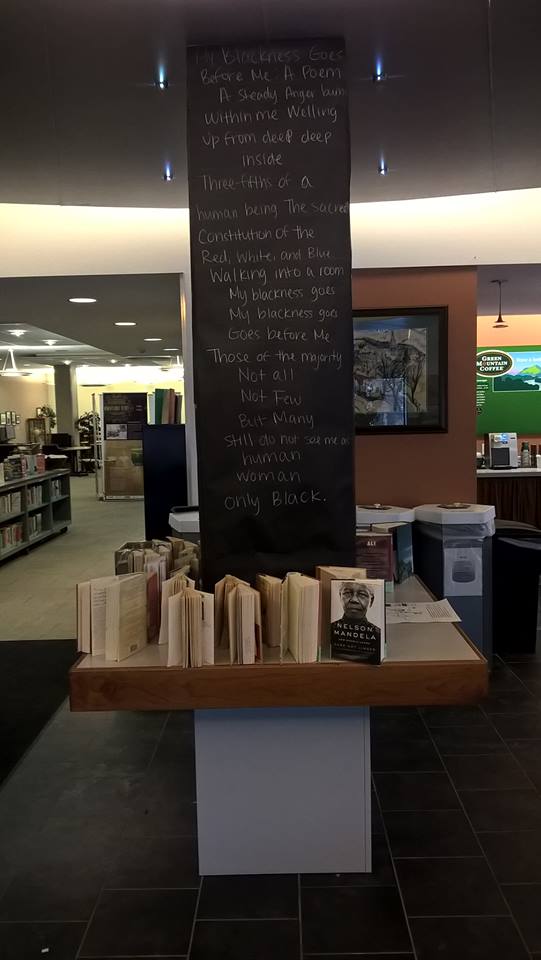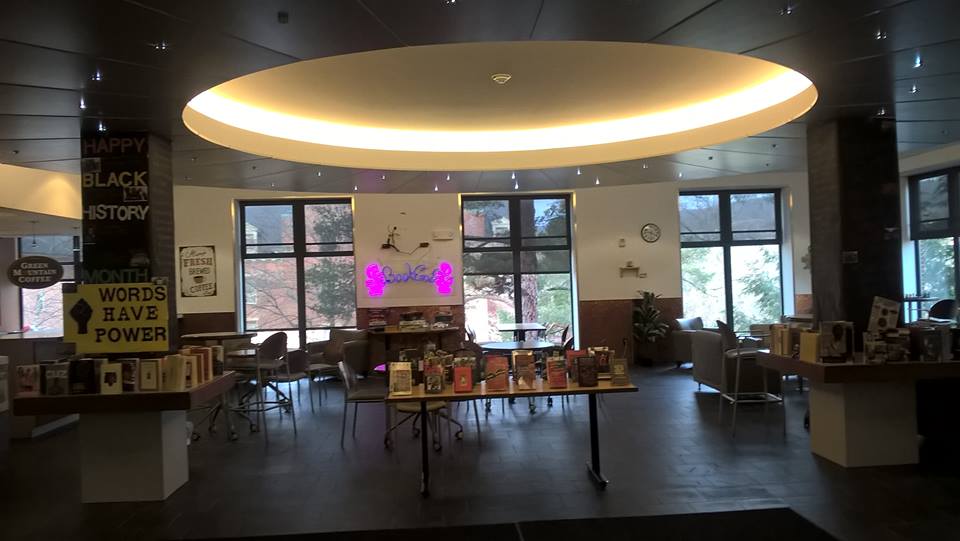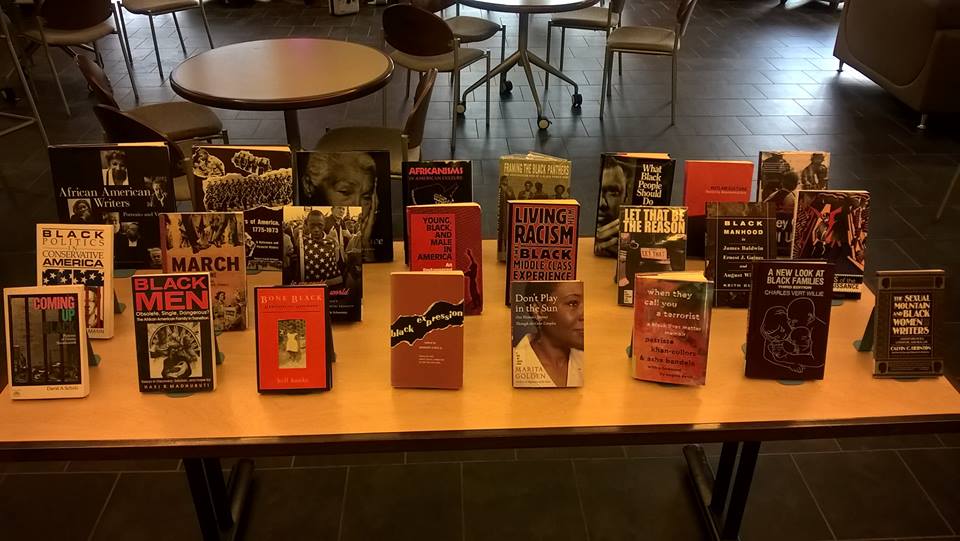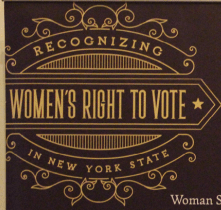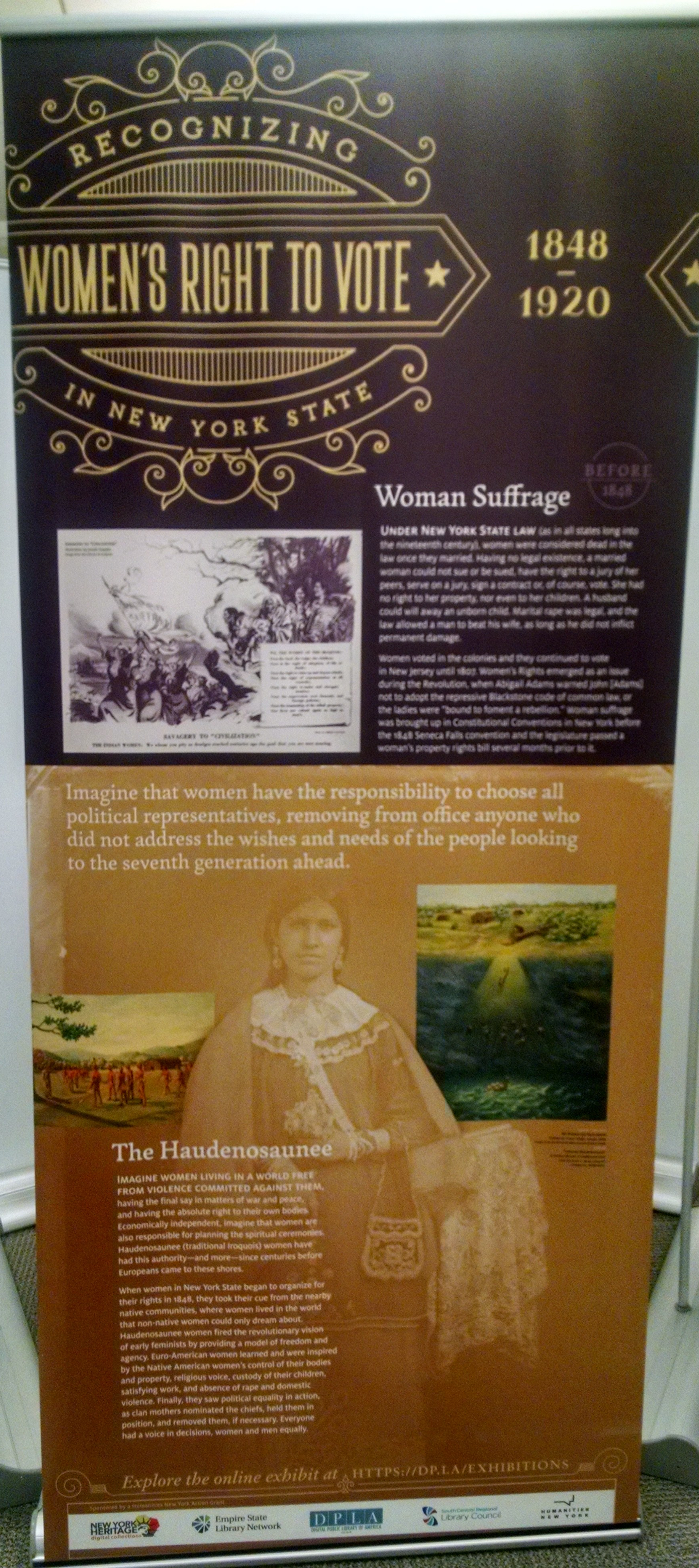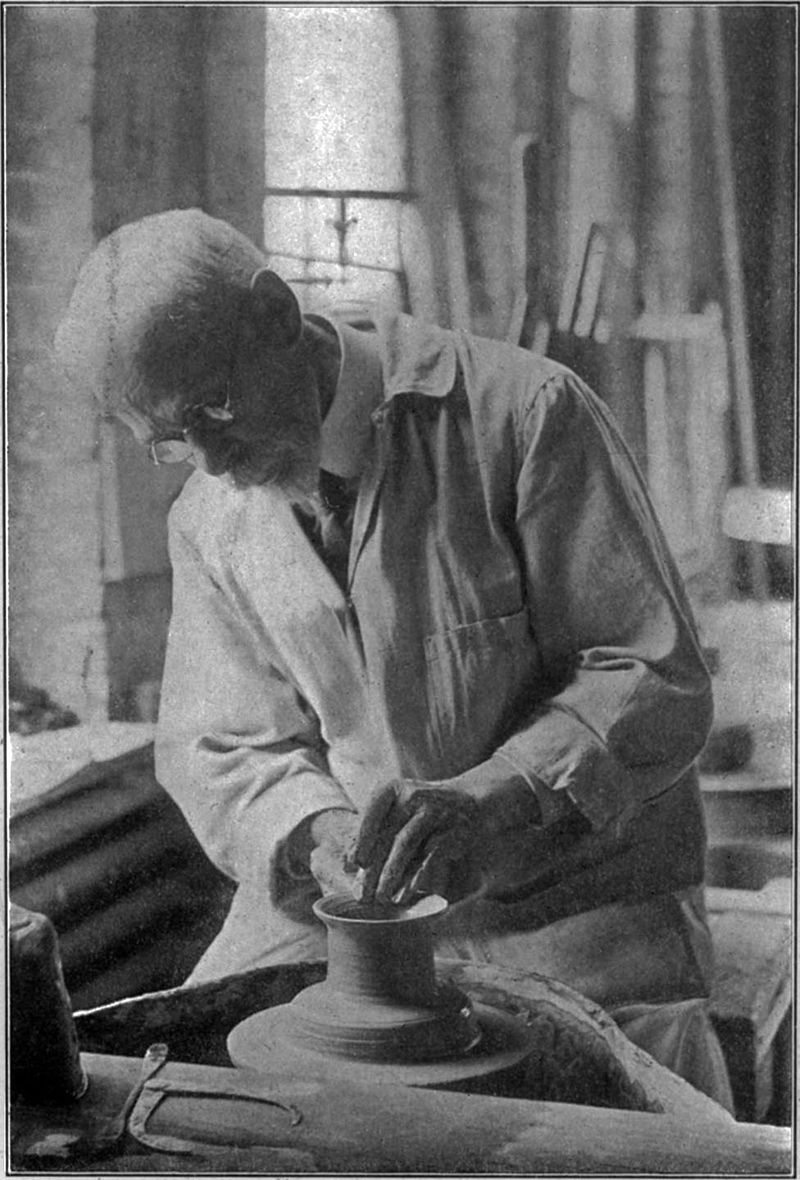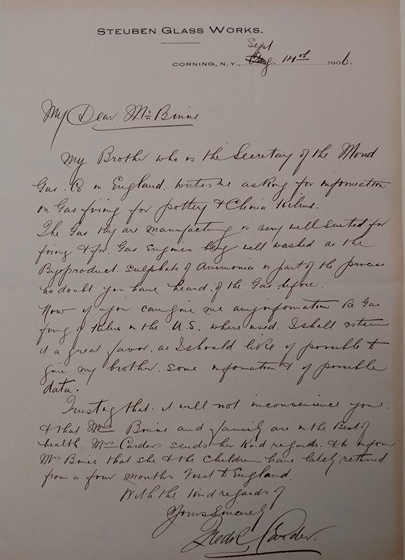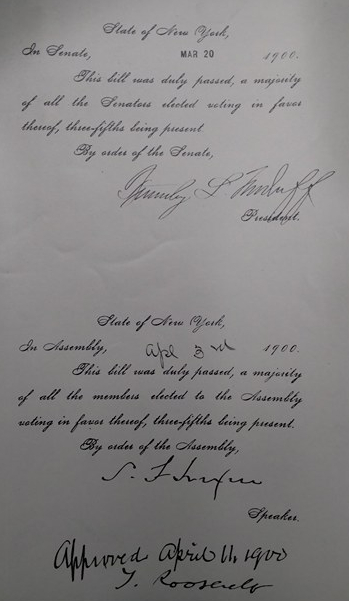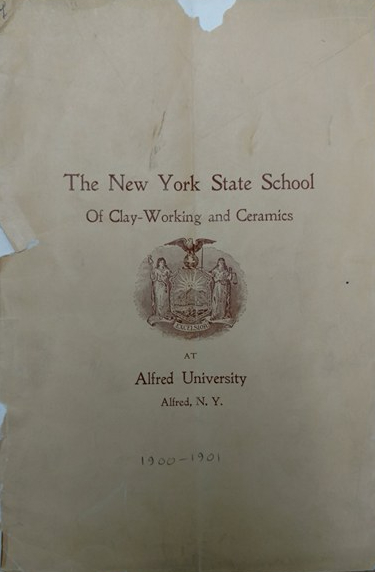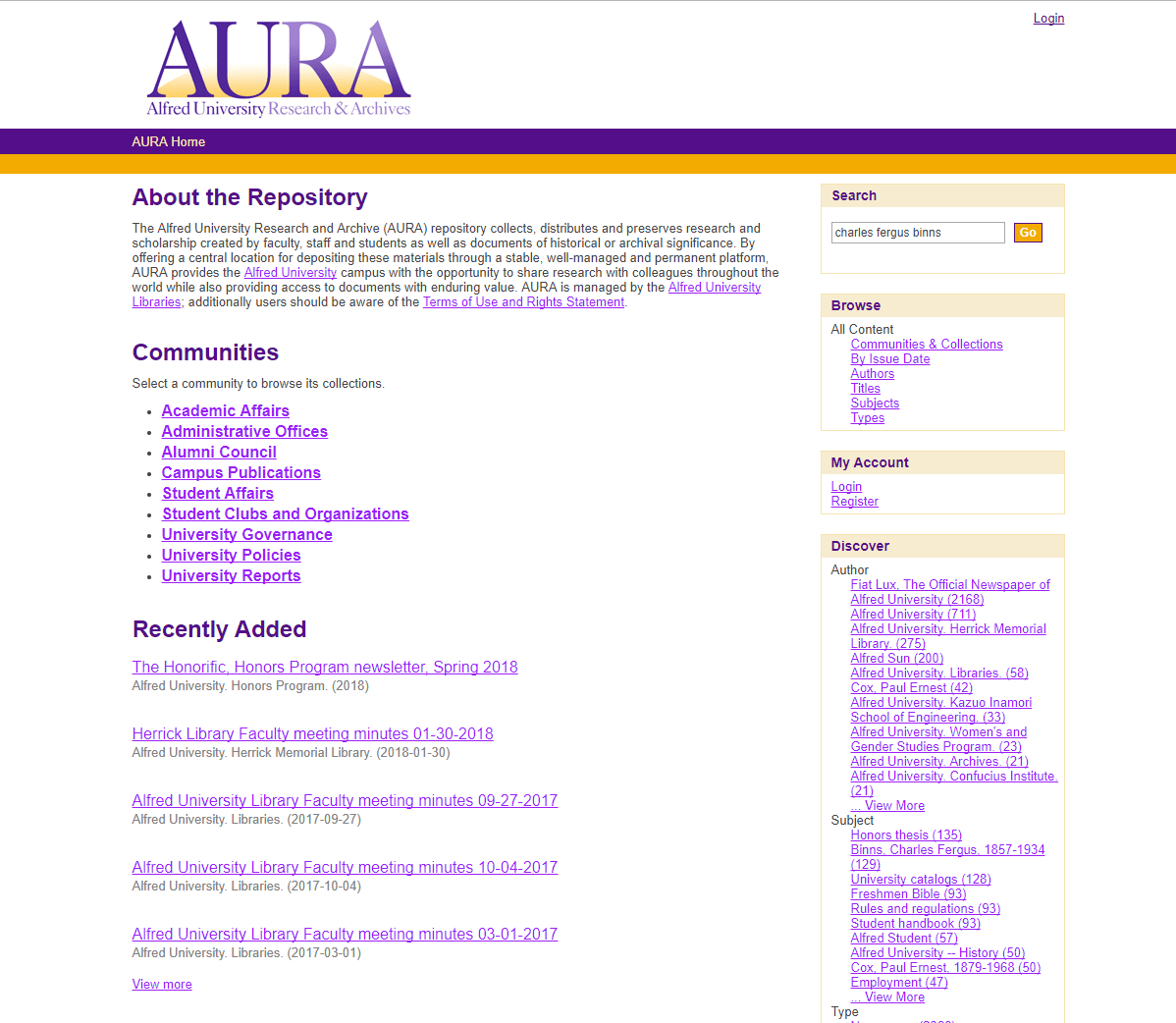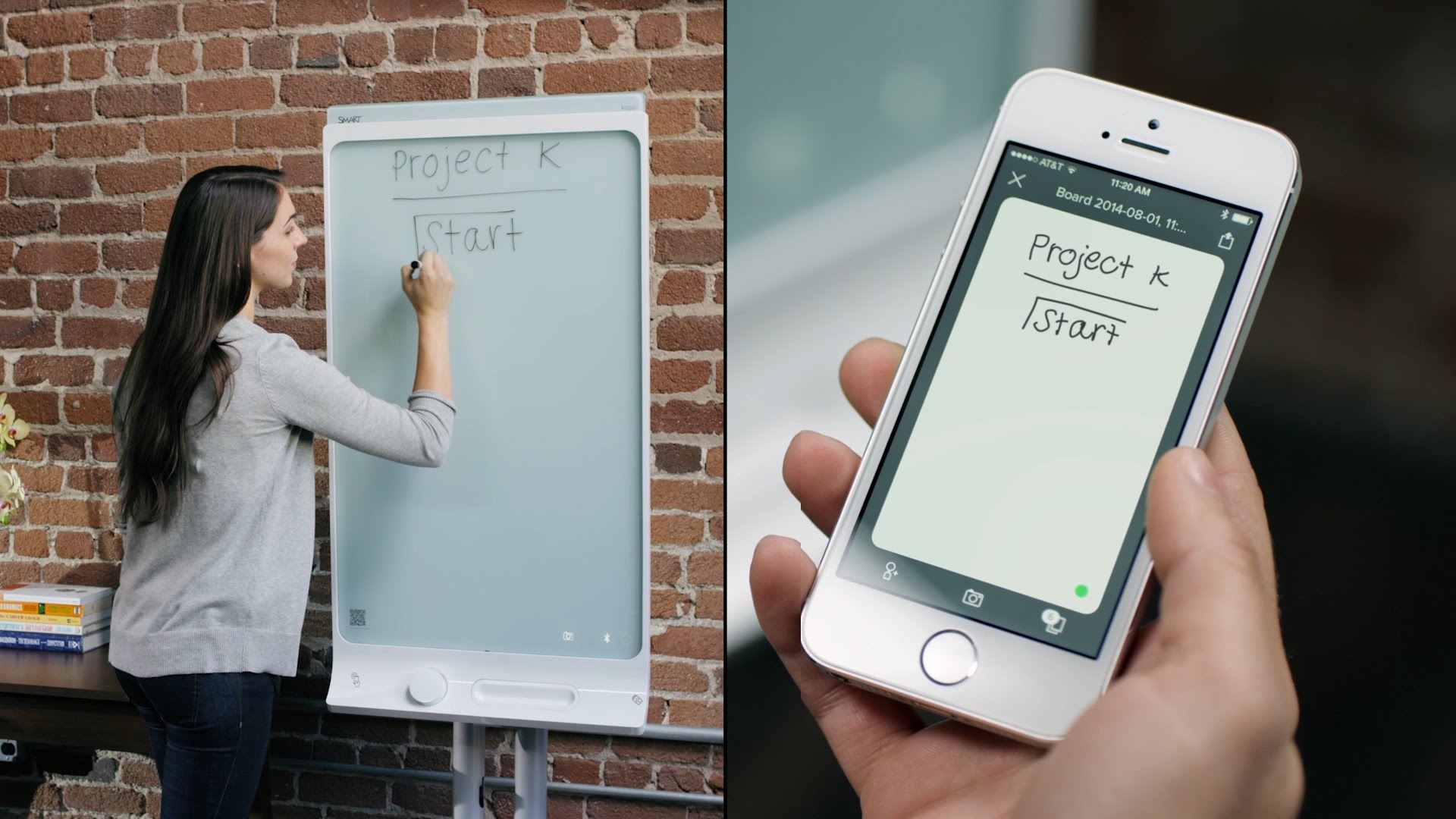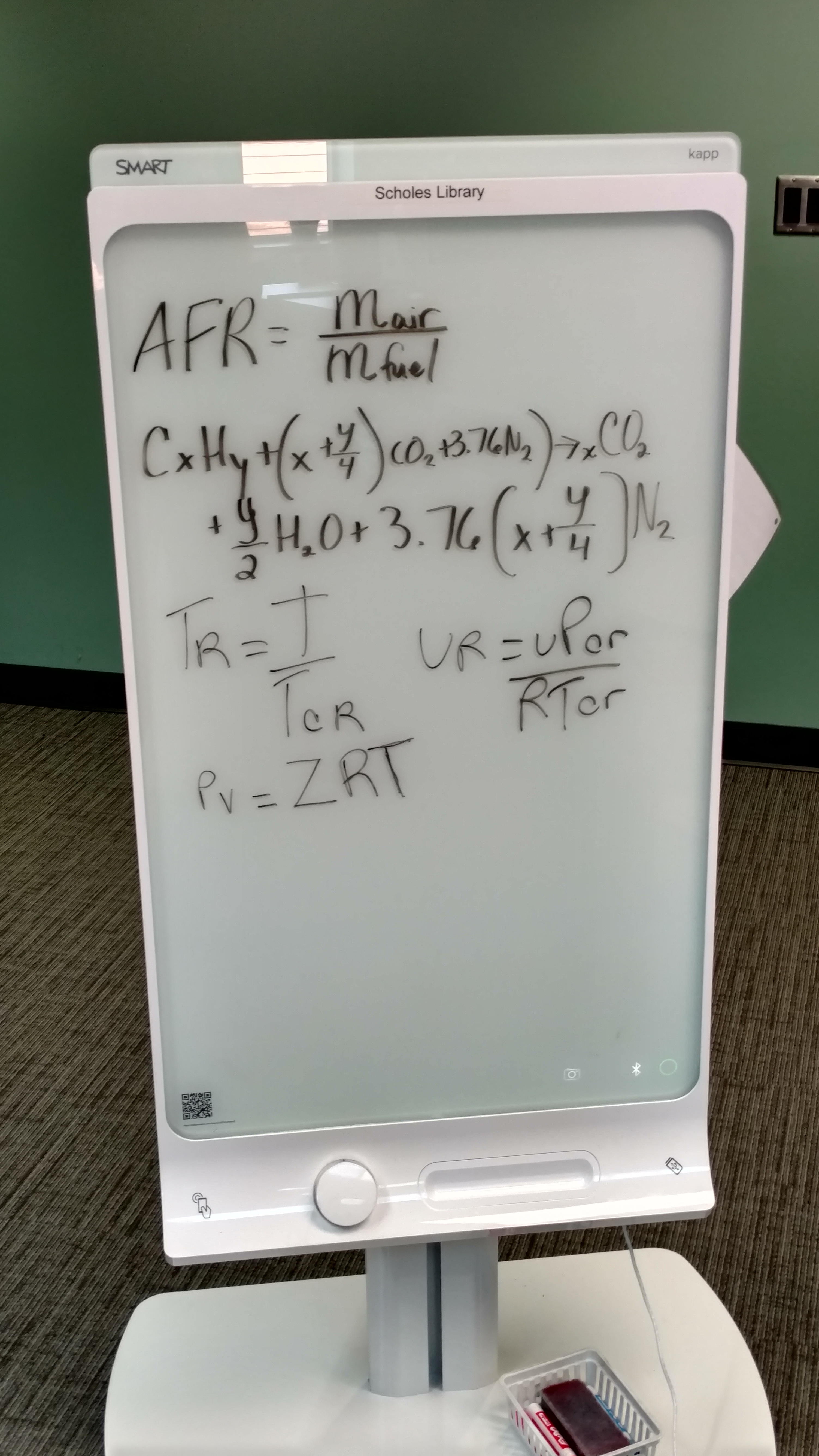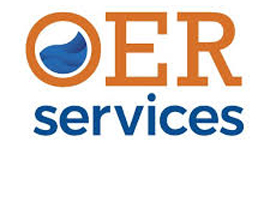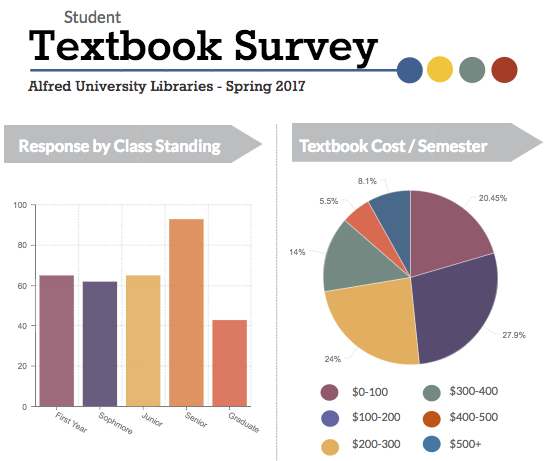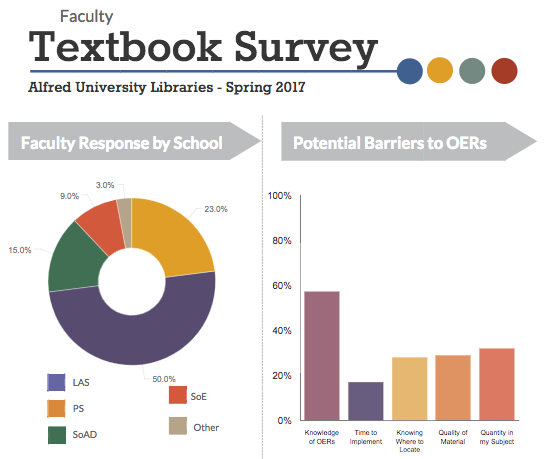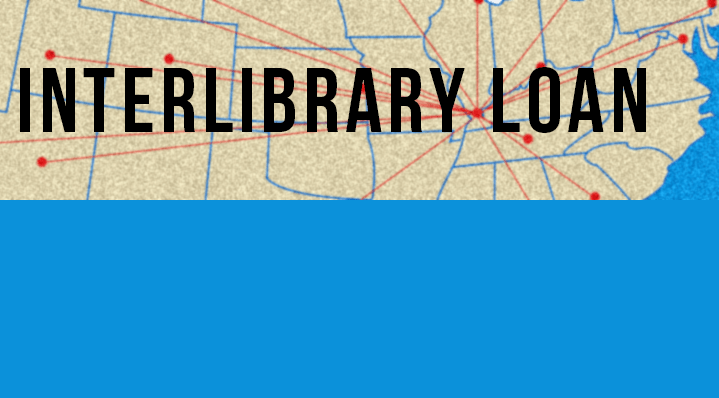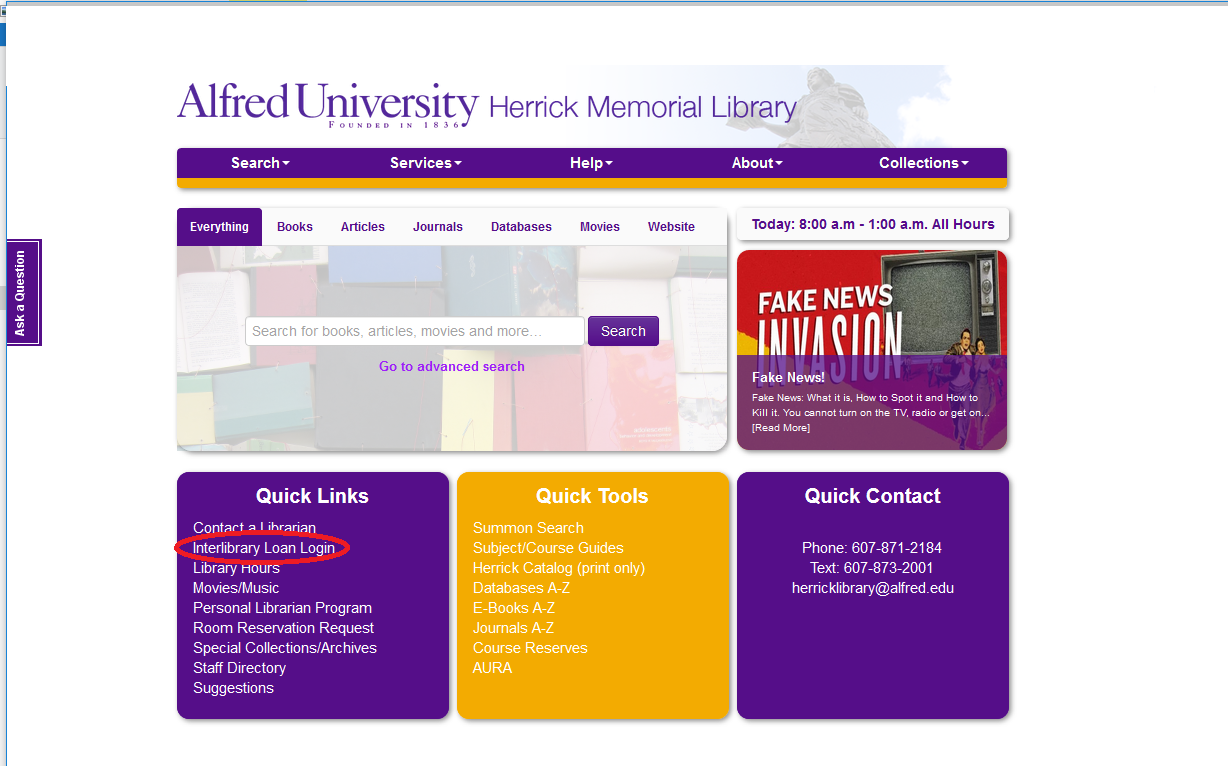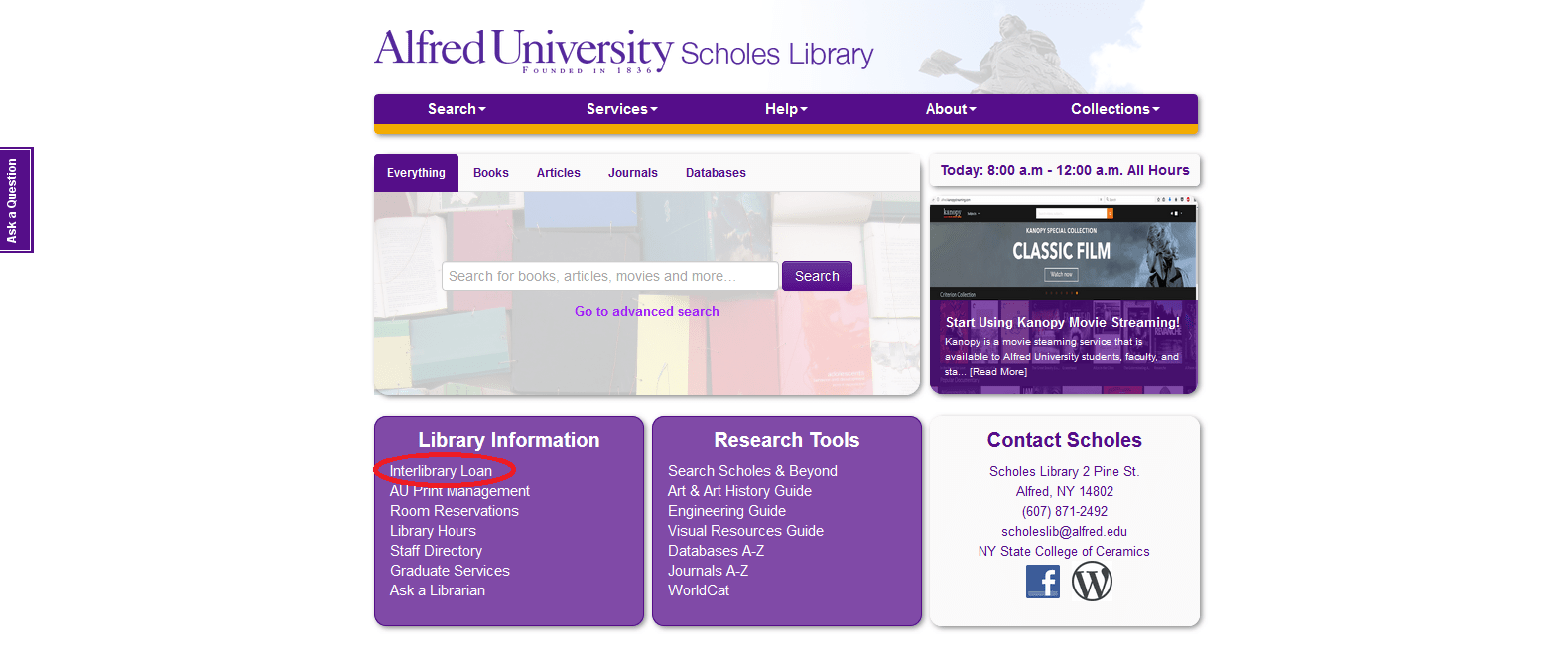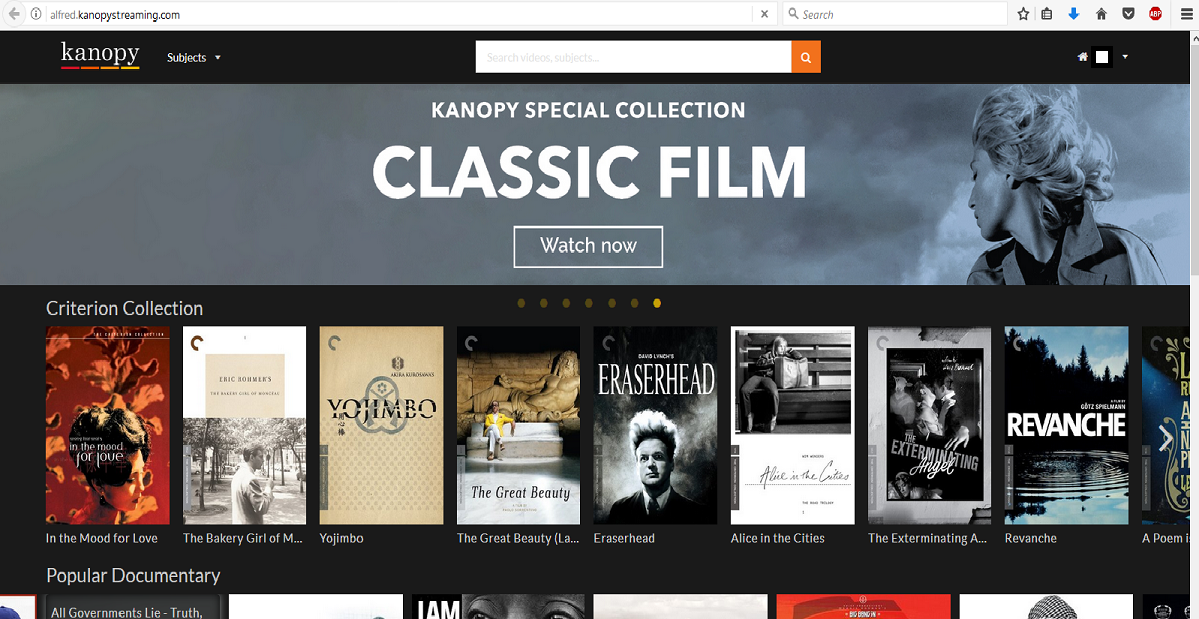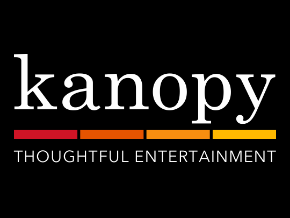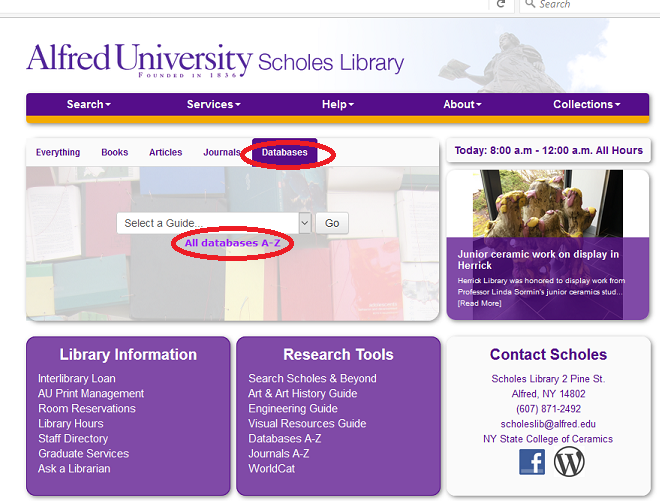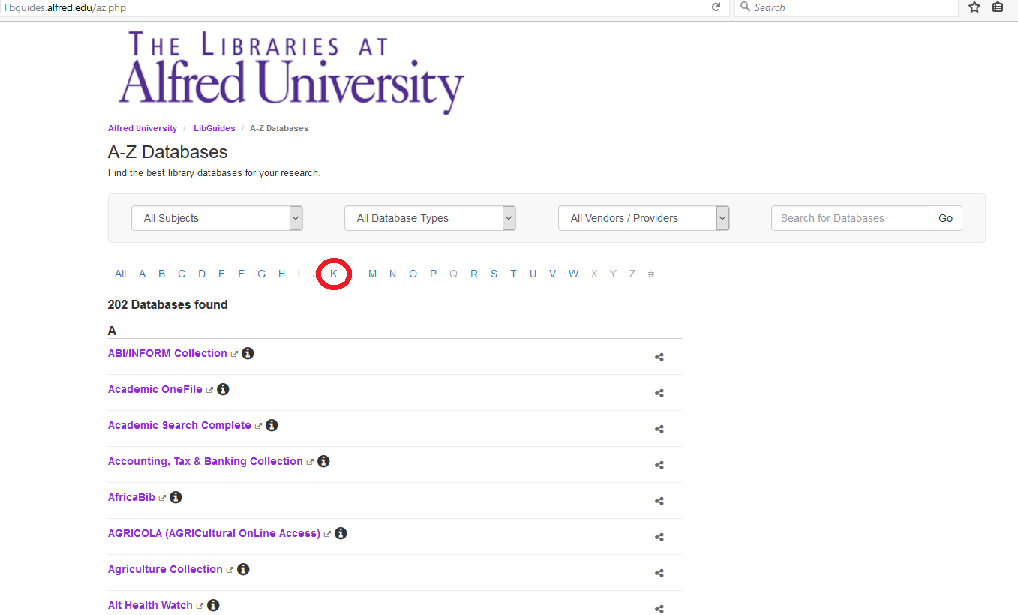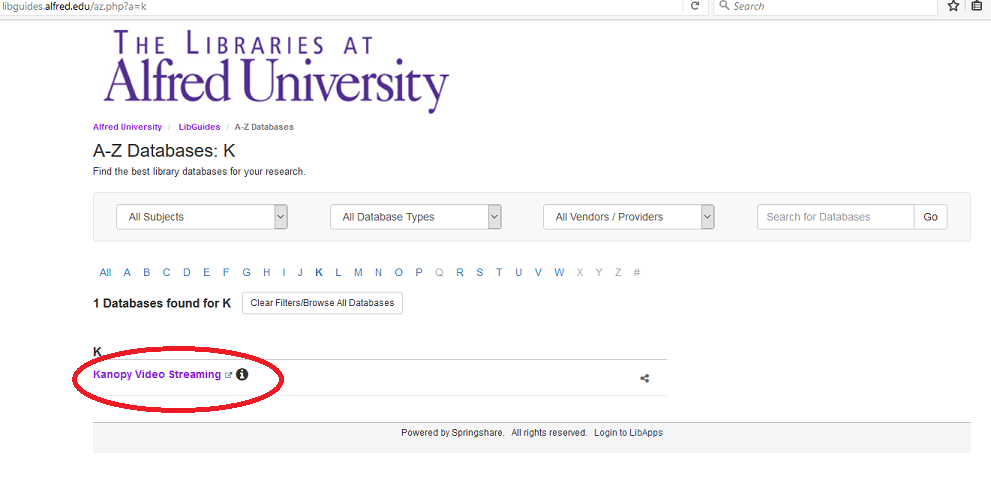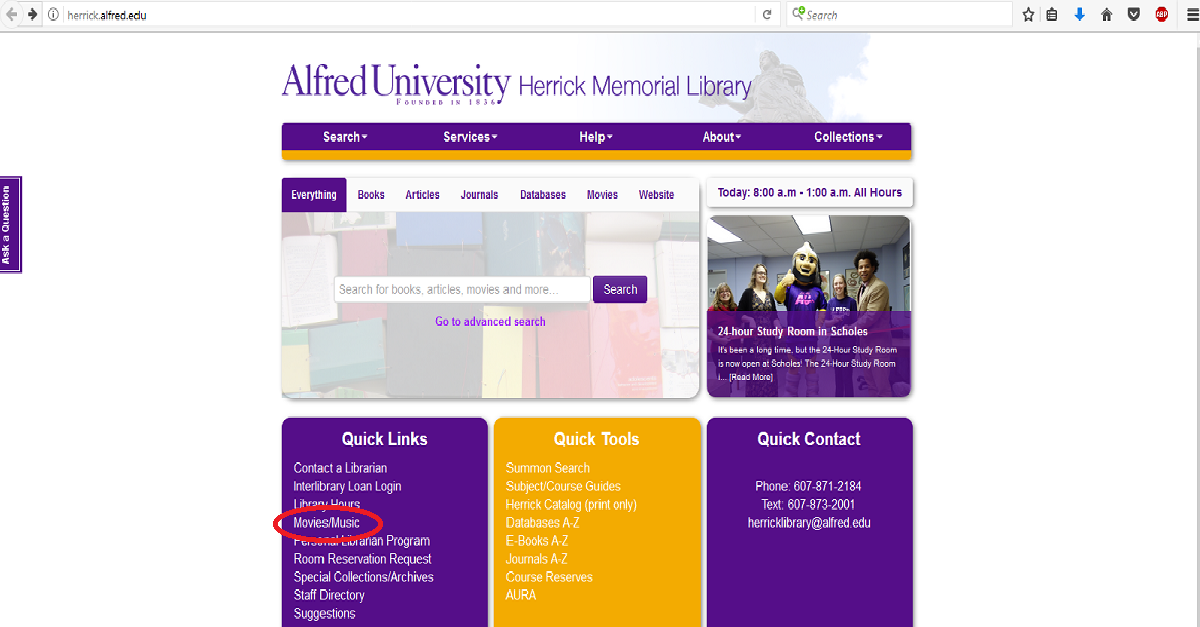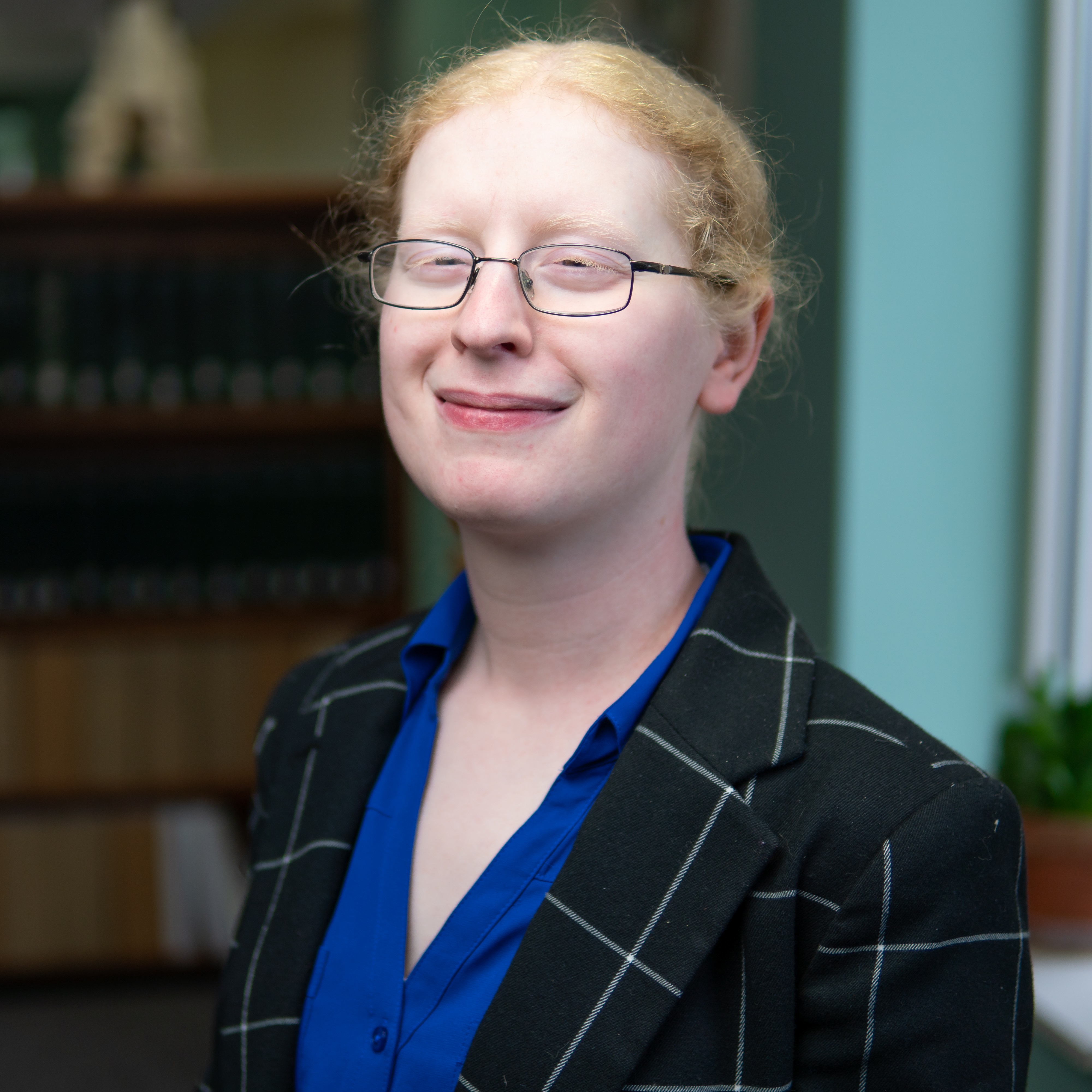
New at Scholes Library: Samantha Dannick — Engineering and Scholarly Communication Librarian
Something Old and Something New
The role of Engineering Librarian is well established at Alfred University. I’m here to support the students, faculty, and staff of the Inamori School of Engineering in their research endeavors and academic lives here at Alfred University. I can help you find, evaluate, and use information and resources (engineering-related or not). I can help you frame your research question or work through how to approach a project. I can help you whether you’re a first-year figuring out the college library and college-level expectations or a PhD student working on your thesis. The bottom line is: I’m an information professional, and I’m here to work and collaborate with the Alfred University community.
The role of Scholarly Communication Librarian is new to Alfred University. I’m here to support the entire Alfred University scholarly community in navigating the world of academic publishing and the frontiers of open access. I’ll keep us moving forward in implementing and developing open educational resources (OER). I’ll be working on making Alfred’s institutional repository, AURA, a home for and a showcase of faculty scholarship. When you’re ready to publish (or at least starting to think about it), I hope you’ll talk to me.
You’ve probably heard that Alfred University Libraries are going through some restructuring; Herrick and Scholes will still be Herrick and Scholes, but they’ll both be under the umbrella of Alfred University Libraries. We’re one great University with two great libraries. It’s an interesting time to come on board, and I’m excited to be here.
Samantha Dannick — Engineering and Scholarly Communication Librarian
